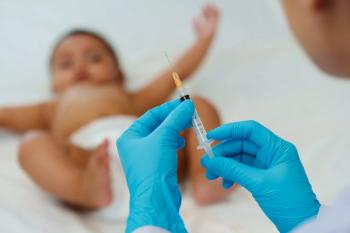
Study Finds Nearly Half a Million Deaths Prevented in the United States by Vaccines
Over 55 years, 450,000 people stayed alive and 200 million people stayed well in the United States because of vaccines.
Since 1963, vaccination has prevented approximately 450,000 deaths in the United States from diseases such as polio, measles, mumps, and rubella.
This figure was calculated in
Leonard Hayflick of the University of California, San Francisco, developed the human cell strain, known as WI-38, in 1962, giving the medical community a safer way to develop vaccines. Prior to its use, many viral vaccines had been grown using monkey cells.
Hayflick co-authored this latest study, along with S. Jay Olshansky, Professor of Epidemiology and Biostatistics at the University of Illinois at Chicago School of Public Health.
This one cell strain has been used over the years to develop vaccines to treat polio, measles, mumps, rubella, varicella, adenovirus, rabies, and hepatitis A.
From 1963 to 2015, it's estimated that vaccines developed from this strain prevented nearly 200 million cases of disease and stopped approximately 450,000 deaths in the United States alone. On a global scale, those numbers jump to the prevention of 4.5 billion cases of disease and more than 10 million lives saved.
"It just tells you that vaccines are really one of the most powerful forms of primary prevention ever manufactured by humankind," Olshansky said.
To make these estimates, Olshansky used published data on cases and deaths for each disease that occurred in 1960 in the United States, before any of the vaccines were developed. He hypothesized that these prevalence rates would have remained constant without the invention of a vaccine and then multiplied them by the number of years a given vaccine has been out on the market.
To calculate the global figures, he applied the death rates and prevalence data seen in the United States to other countries. This is likely a conservative estimate since many countries may have had prevalence and death rates for these diseases that were higher than those in the United States, Olshansky said.
He believes the study is particularly relevant today because of the vocal antivaccination movement that has emerged and that is thought to have reduced vaccination rates in the United States.
For instance, in the United States, vaccination rates for measles, mumps and rubella (MMR) are currently estimated to be as low as 50% to 86%. Measles outbreaks occurred in California in 2014 and 2015.
This study, Olshansky said, shows the tremendous value that vaccines have had on the world since their introduction.
"You have the rise of this antivaccine movement and part of what's going on here is that people who are participating in this antivaccine movement in all likelihood have themselves been vaccinated and they are alive today in many cases or their parents were alive to give birth to them because of the presence of vaccination," he said.
Newsletter
Pharmacy practice is always changing. Stay ahead of the curve with the Drug Topics newsletter and get the latest drug information, industry trends, and patient care tips.











































































































































































































